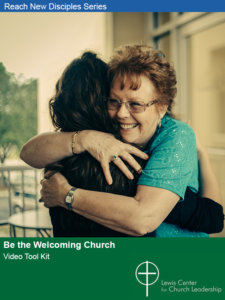What do newcomers see when they visit your church? Pastor Molly Phinney Baskette invites you to see your building through the eyes of a newcomer, noting what’s confusing or unattractive, and identifying ways to make your building more welcoming.
This article was originally published on June 10, 2015.
Your building has way more signs than you think it does: The locked front door, the boxes piled up in corners that assault the newcomer’s gaze, the messy Sunday school rooms, the nursery with dangerous or broken toys, the bulletin boards with ancient announcements, the mold growing all over the women’s bathroom. (Yes, that happened at my own church this past very humid summer.) All these signs send the message: We’re depressed. We’re not ready for you. We’re not healthy. We don’t want you, and we don’t understand what your children need at all.
If you’ve been at your church for a while, you might not see what’s not working. Ask a friend, preferably someone who is great at being very honest and who has never set foot in your church, to come over. Don’t meet them out front—have them find their own way in, with the church how it usually is on Sunday morning—same doors locked/unlocked.
Have them write down everything they notice and all the obstacles to entry and to finding their way around easily. I once went to a job interview at a church and had to try four separate exterior doors before I picked the right one! It was humiliating. If it was humiliating for me, who had a definite purpose and invitation to be there, how must it feel to a shy person who has never been to church before and doesn’t know if they really are welcome?
Walk around with your friend, once in the building, but let them lead the way. Have them pretend they need to use the bathroom, or they have children to drop off at Sunday school, or they are coming into worship ten minutes late. Can they easily find what they need? How many decisions/wrong turns do they have to make to find the sanctuary? What do they see along the way? How would they, as maybe slightly critical newcomers, judge what they see? Is there room for them at the back in worship when they sneak in? Is there still someone to hand them a bulletin if they are ten minutes late? The bulletin itself is a form of passive signage.
Make sure the interior signage is easily visible and navigable. Don’t use coded language. Don’t point the way to the “Narthex” or “Sacristy”! Put up paper signs and arrows for a while and vet your name and place signage through several other people to crowd source the best possible configuration before you buy your permanent interior signs.
This article is an excerpt from Molly’s book Real Good Church: How Our Church Came Back from the Dead, and Yours Can, Too, © 2014, used by permission from The Pilgrim Press.
- Be the Welcoming Church, a Lewis Center video tool kit resource
- How Do New People See Your Church? by Lovett H. Weems, Jr.
- Do New People at Your Church Need a GPS? by Lovett H. Weems Jr.
- The New Welcome, a Lewis Center video tool kit resource
- 50 Ways to Welcome New People, a free Lewis Center resource
Image by Gerd Altmann from Pixabay







